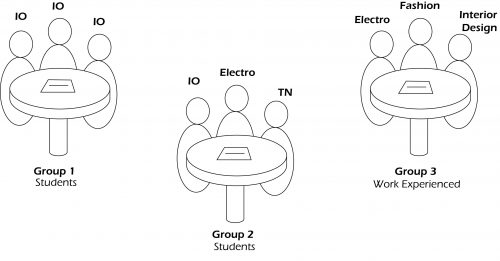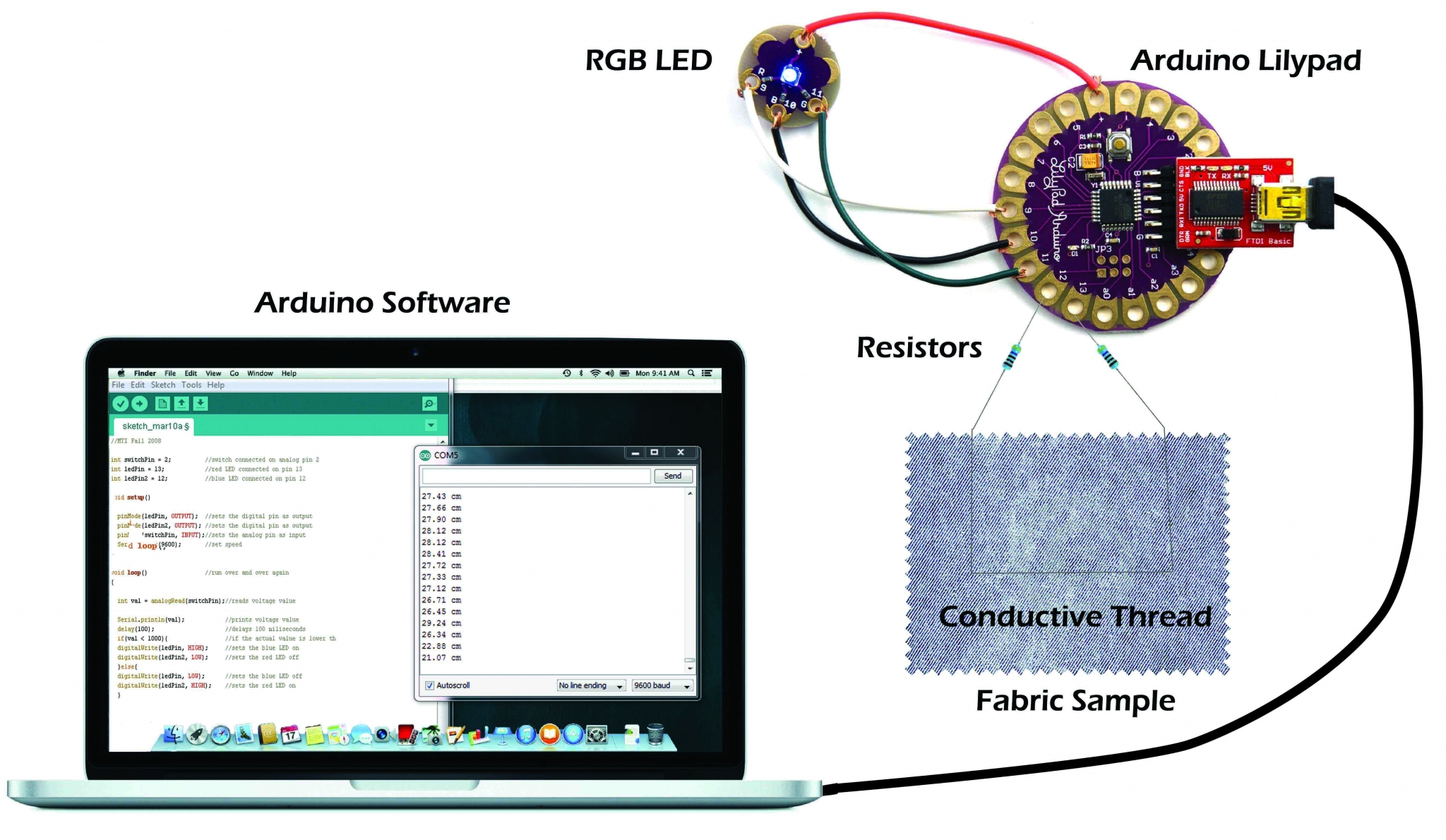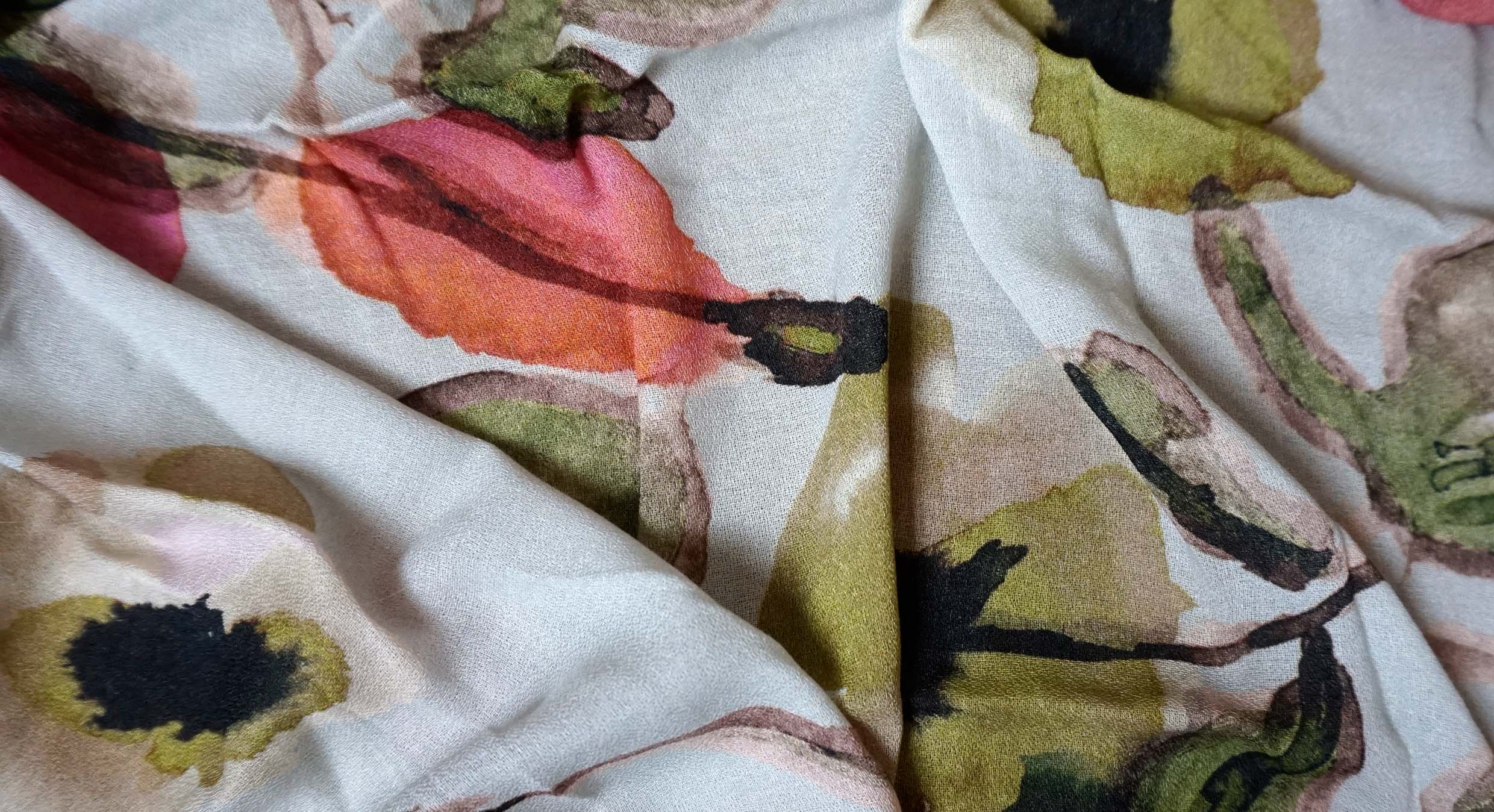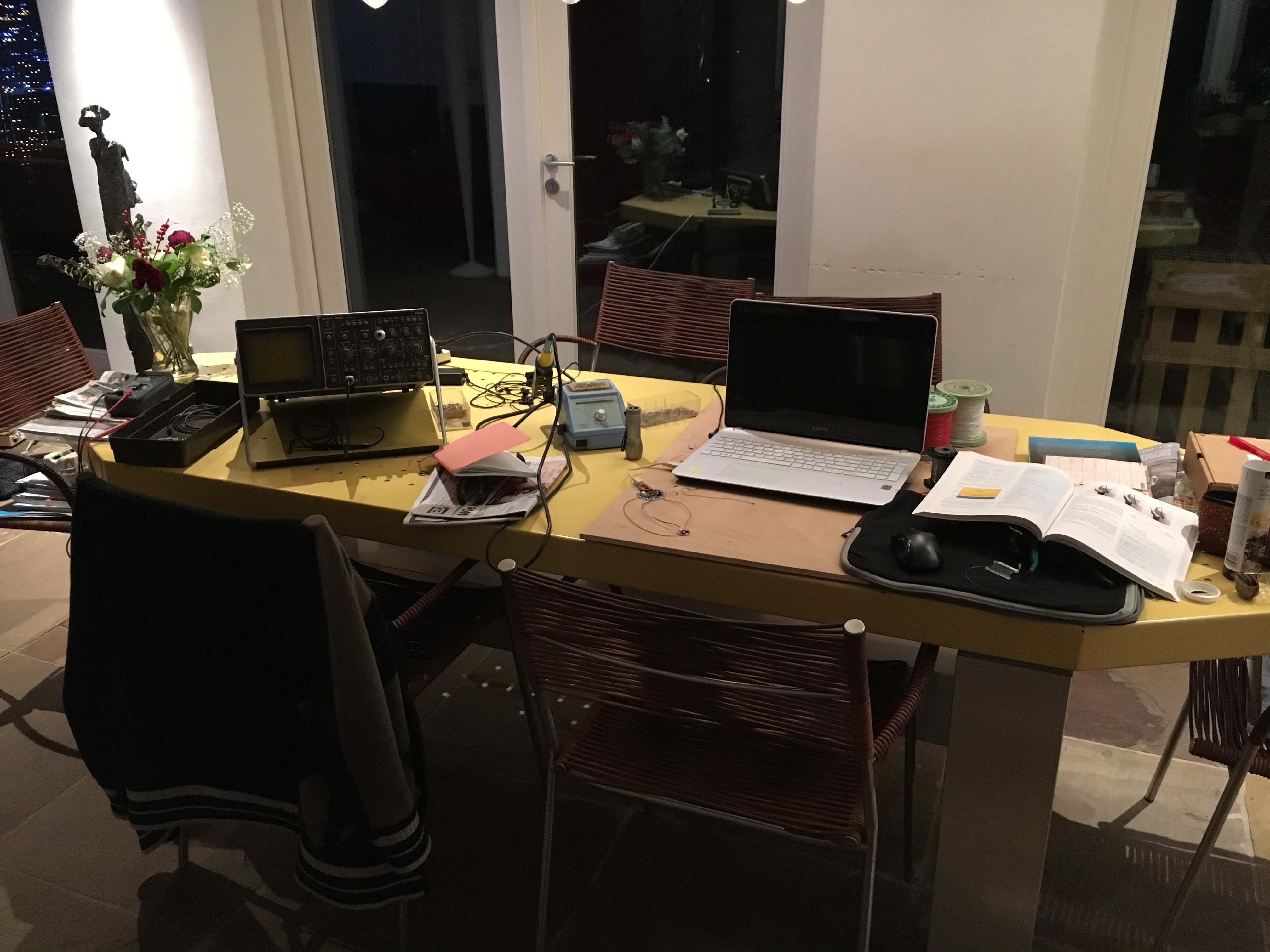To understand which insulator-conductor material combination creates a functional garment a material study is needed. In the conclusion of the literature report some materials are mentioned which will be used for further research. The test will have three parts and a user test. The first part is the research is based on combining pure insulators with pure conductors. Then the pure conductors will be combined with a mix of insulators that performed best during the first part. During the third part of the study the best insulating materials will be selected and will be combined with conducting materials of different thicknesses to explore the difference in conductivity. The research will be concluded with a user test in which users will interact with the garment.
The testing of the sensitivity of conductivity for each of the material combinations will be researched. In order to analyse this, an Arduino Lilypad is used to connect the conductive wires to the Arduino software. Also, an RGB LED will be installed to get more tangible feedback about the sensitivity of the wires. If the electrical flow in the wire is low red will appear, if the flow is medium blue will appear and if the flow is high than green will appear.
General set-up for each study
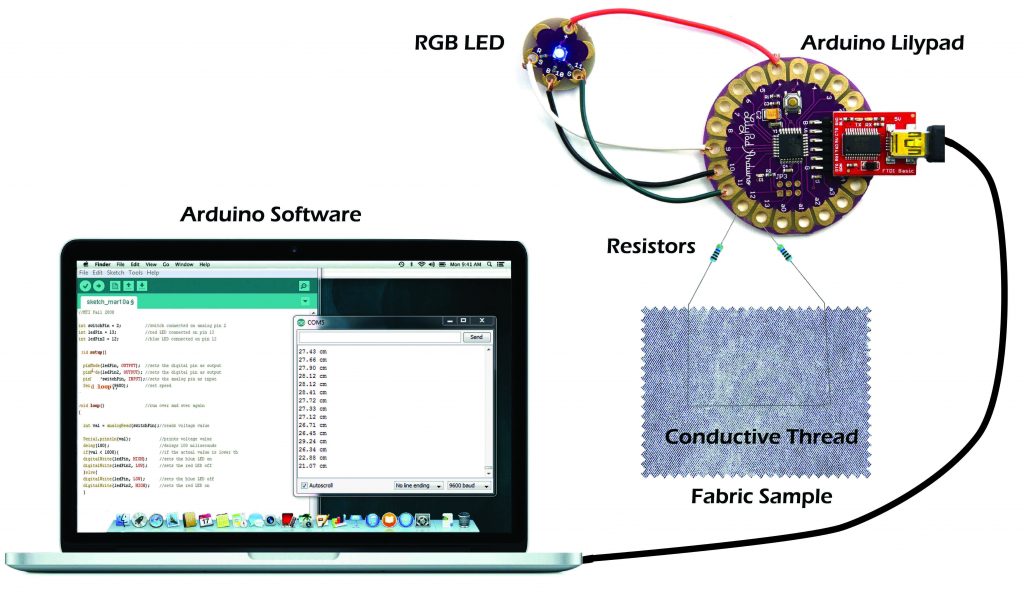
Material study part 1
The pure conducting materials will be combined with pure insulating materials to find a good match of materials. The materials will be tested in four different settings. The first test will be done at room temperature in dry surroundings, the second test will be done at zero temperature in dry surroundings, the third test will be done at room temperature in moist surroundings and the final test will be done at zero temperature in moist surroundings.
Set-up
The materials will be presented in a matrix in which the x-axis list the insulating options and the y-axis form the conducting options.

Material study part 2
The pure conducting materials will be combined with a mixture of insulating materials that were a good match in the first research. The materials will be again tested in four different settings. The first test will be done at room temperature in dry surroundings, the second test will be done at zero temperature in dry surroundings, the third test will be done at room temperature in moist surroundings and the final test will be done at zero temperature in moist surroundings.
Set-up
The materials will be presented in a matrix in which the x-axis list the insulating options and the y-axis form the conducting options.

Material study part 3
The best insulating materials will be selected and will be combined with the conducting materials of different thicknesses in order to explore the difference in resistance. The materials will be again tested in four different settings. The first test will be done at room temperature in dry surroundings, the second test will be done at zero temperature in dry surroundings, the third test will be done at room temperature in moist surroundings and the final test will be done at zero temperature in moist surroundings.
Set-up
The materials will be presented in a matrix in which the x-axis list the insulating options and the y-axis form the conducting options.
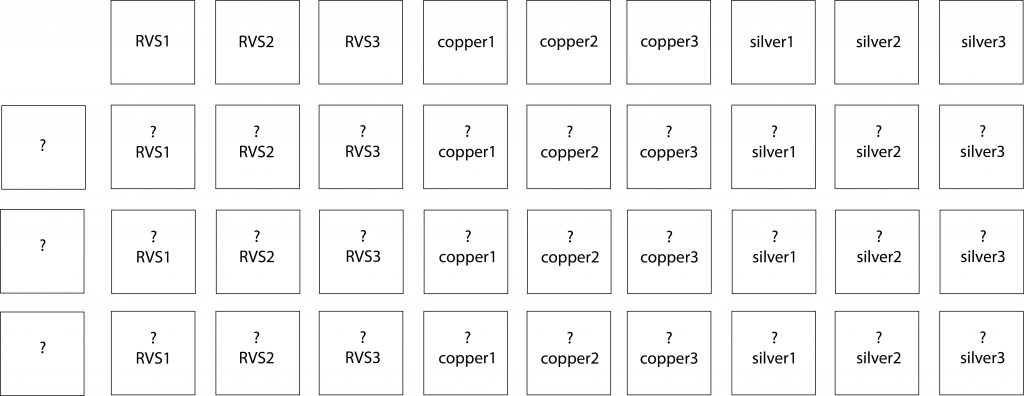
User study 1
Now the best insulating and conducting combinations are found, users will be asked to interact with them. This will be done by using the Material Driven Design methodology. By doing so, the possibilities and limitations of the material are being evaluated. ‘What kind of material is it?’, ‘What can the material do?’ and ‘What can you make with use of this material?’ are the questions that will be answered during these sessions. Bigger pieces of textile will be used during this session to provide more interaction freedom.
There will be three sessions held. One session will be together with three IO students to get the design perspective from one field of expertise, one will be held together with three students from different fields; Aerospace, Physics and Industrial Design and the last one will be held with three people with work experience on electronics and textiles.
